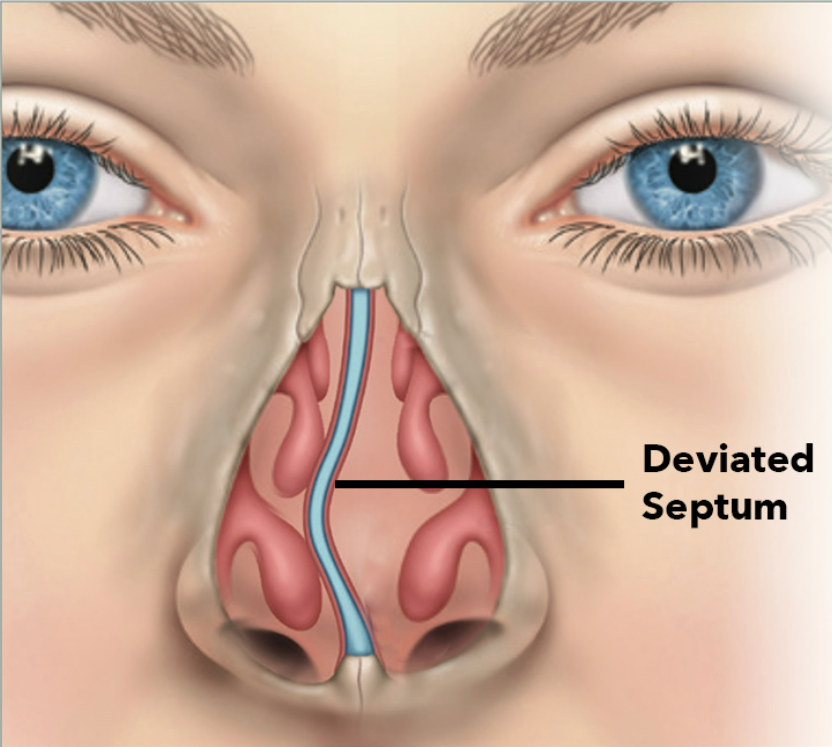
Septoplasty
A septoplasty is a surgical procedure that I commonly perform to straighten the septum. The septum is the thin wall that divides the inside of the nose into two nostrils. It is comprised of cartilage and bone with a lining on each side.
A deviated septum is a condition where the septum is bent or crooked. This narrows one or both nasal cavities and causes or may contribute to nose block, sinus infections and hearing problems (eustachian tube dysfunction).
The procedure
Septoplasty is performed under general anaesthesia, which means you will be asleep throughout the procedure.
I make an incision inside one or both nostrils to lift up the lining. The incision is usually made behind the entrance of the nose, so it is not visible from the outside.
I will then carefully straighten the septum by removing or repositioning the obstructing bony or cartilaginous tissue. The lining will be laid down on the straightened septum.
The incision will be closed with dissolving stitches. I usually place dissolvable packs inside the nose to keep the septum in place while it heals and to capture nasal secretions and blood.
You will be able to go home the same day as the surgery.
The residual packing material will be removed, usually two weeks later, in the clinic.
What are the risks of septoplasty?
A septoplasty is a relatively safe procedure, but there are some potential risks associated with it.
A little bit of bleeding may occur in the first day or two after the operation but is usually self-limiting.
I aim to minimise the infection risk by giving you a course of antibiotic ointment and tablet post operatively.
Extremely rarely, a septoplasty may slightly change the shape of the nose. Also very rarely, a hole may form in the septum. This is called a septal perforation. A septal perforation is usually not symptomatic although it may cause a whistling noise or crust formation. These structural problems may require a further operation to remedy.
Another rare complication is a temporary or permanent loss of smell. This is because the surgery can injure the olfactory nerves, which sit high on the back of the septum. The nerves are responsible for sending smell signals to the brain.
Some people also have upper lip and dental numbness. This is usually temporary and returns within a week or so.
The vast majority of people experience good results from a septoplasty, however a few patients may require a revision procedure to further optimise the nasal airway.
Post operative care
Septoplasty is usually a routinely performed procedure, and most people experience only mild discomfort afterwards. The main issue is that both nasal cavities will be blocked until I remove the packs approximately two weeks later.
You may have a sore throat after the surgery from the breathing tube that was used during the procedure. This will usually go away within a few days.
Most people are able to resume their normal activities within a week, although it is important to avoid strenuous activity including exercise and gym sessions for two weeks.
You will be prescribed painkillers, decongestant nasal drops, an antibiotic nasal ointment and often a course of tablet antibiotic.
Avoid hot and spicy foods for at least 1 week to prevent bleeding.
Sneeze via the mouth and try not to blow your nose until the packs have been removed.
On the rare occasion you do bleed heavily after your surgery, you may need to visit your local accident and emergency department.
